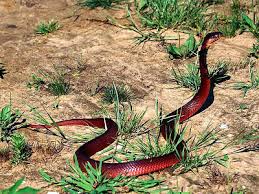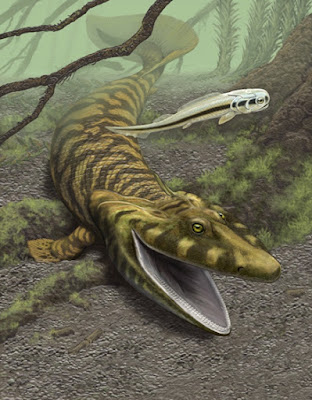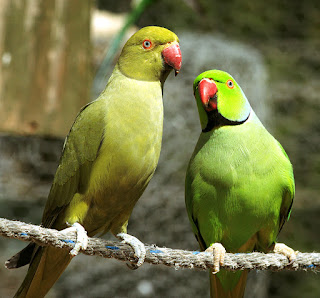Corals, Jellyfish and Sea Anemones
Corals, Jellyfish and
Sea Anemones
Corals, Jellyfish, Sea Anemones and their relatives are belongs
to a large group called the cnidarians. Jellyfish, Sea anemones and hydra- like
animals called hydrozoans also belong to this diverse group of mostly marine
invertebrates, which includes more than 9,000 species.
If we talk about hydras, then they are a group of very simple
aquatic animals that are related to corals, sea anemones and jellyfish. They are
usually just a few millimetres in length and are best studied under a
microscope. It is interesting to know that, this disparate group is unites by
special cells, called cnidocytes and these special cnidocyte cells play an
important role to capture their prey. Cnidarians are either sessile
(non-moving) organism, known as polyps, or free- swimming medusa, which are
comprised of a mouth surrounded by a ring of tentacles that bear the
cnidocytes. They use these stinging cells to trap a wide range of prey, from
microscopic plankton to small fish. Cnidarians are prey to a similarly wide-
range of predators, from starfish and sea slugs to reef fish and turtles.
The classification of the group is open to debate, however, and many
biologists recognize separate groups, such as the staurozoa (stalked
jellyfish).
There are four main groups of cnidarians:-
1. The Anthozoa: which includes corals,
sea anemones and sea pens.
2. The Scyphozoa: Jellyfish.
3. The Cubozoa: Box Jellyfish.
4. The Hydrozoa: Hydra and relatives such
as the infamous Portuguese man of war.
Cnidarians have been around for millions of years. The oldest
fossils date back to more than 580 million years ago, during a period in Earth`s
history called the Precambrian era. Experts think that corals first appeared
around 490 million years ago. Current thinking suggests that they developed
from calcareous sponges from the group calcarea, although they are also linked
to comb jellies (called thus because they are covered with ‘combs’ of hair-like
projections called cilia that beat synchronously and help the animals swim)
from the group Ctenophora. What distinguishes them from most other animals is
the dact that they are radially symmetrical, which means they have a top and
bottom, but no front and back.
Corals
Corals are exclusively marine animals that live in colonies of
small, identical units called polyps. The coral you can see develops from one
polyp, which divides again and again to form the colony and the visible coral. Corals
come in two main types:
1. Hard: Hard corals are made up of a hard
limestone skeleton, which they use to build up enormous reefs in tropical
waters, such as the Great Barrier Reef off the Coast of North- Eastern
Australia. Reef building corals reproduce in a process called ‘broadcast
spawning’ when all the coral polyps in a reef simultaneously release eggs and
sperm into the water. Zoologists have noticed that the time when corals spawn
broadly coincides with the time of the full moon. No one really knows why this
happens, but it may something to do with the tides or light conditions.
2. Soft: Soft corals are more plant like in
appearance and lack the limestone skeleton of hard corals. Each soft coral
polyp has eight tentacles (as opposed to the 12 tentacles of hard corals) that
surround the human mouth and the colonies form an amazing range of different
shapes and sizes. For example, the polyps of the grooved brain coral form a
wrinkled mass that resembles the human brain.
Jellyfish
Around 300 species of jellyfish form a group of similarly simple
invertebrates that drift along in ocean currents in search of food. The main
body, or bell, of these animals consists of a mass of jelly like material that
surrounds the opening into gut. They use their stinging tentacles to paralyze
prey and draw it into the gut. Any undigested food passes back out through the
same opening. Jellyfish have developed a rather novel way of getting around-
Jet Propulsion. When a jellyfish wants to move, it relaxes the opening into the
gut and fills with water. When the body is full, muscles in the bell contract
and push the water through the opening to the gut. The energy of the water jet
then pushes the jellyfish forward in the opposite direction.
Sea anemones
Sea anemones are often called ‘sea flowers’ because they
resemble tiny plants on the rocks of tidal pools or shallow waters. Indeed,
these exclusively marine invertebrates are named after anemones, a group of
around 120 species of flowering plants. Like plants, sea anemones do not move
too much. Instead, the sea anemone uses its sticky foot to anchor its soft body
onto a rock or other hard surface. The cylindrical body opens up into a central
disk, or mouth, which is surrounded by stinging tentacles. Stinging cells in
the tentacles shoot out when passing prey touches the trigger hair. The cells
inject venom into the unfortunate victim and the immobilized victim is then
drawn into the mouth. Some animals, notably the clownfish, have developed
immunity to the anemone`s stinging tentacles. Clownfish make their homes in the
tentacles, protected by slimy mucus that covers their bodies.
Reference
Also See
• Parrots
• Bats
• Bears
• Birds
©
Don`t Kill Creatures of
Nature, You have No Right to Do That
Being Vegetarian, Love
Creature of Nature
Live and Give Space for
another Life
Save Nature
Love Nature






















WhatYouSea sells coral frags on the internet for people with saltwater aquariums. A coral frag is a small piece of live coral that a person can add to their tank,and grow out. The niche should be blogs related to saltwater aquariums, and coral propagation and sales. Let me know if you need more information.
ReplyDeleteif you want more just look here "Live coral"
Beautiful they are, when they touched...its awesome feeling.
ReplyDelete